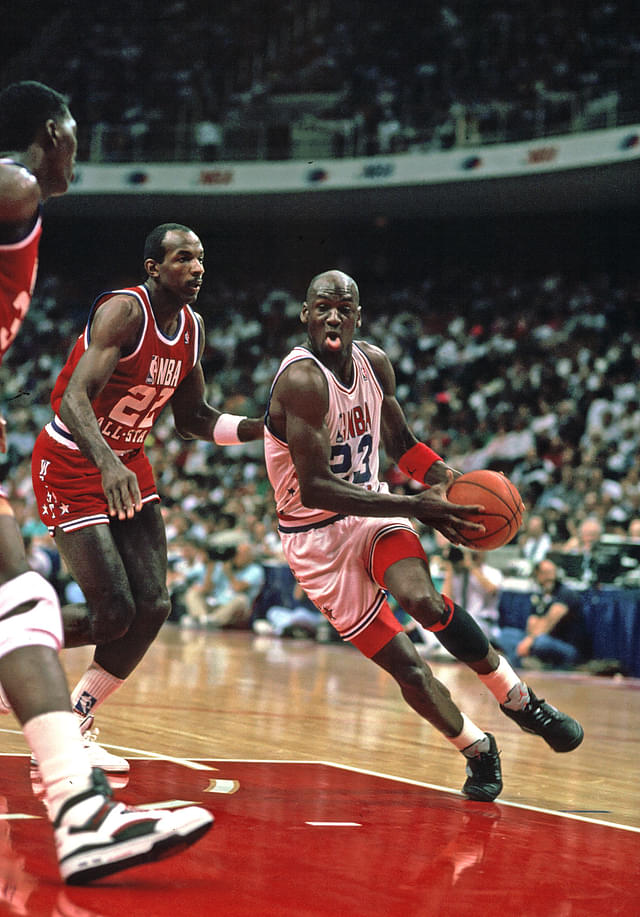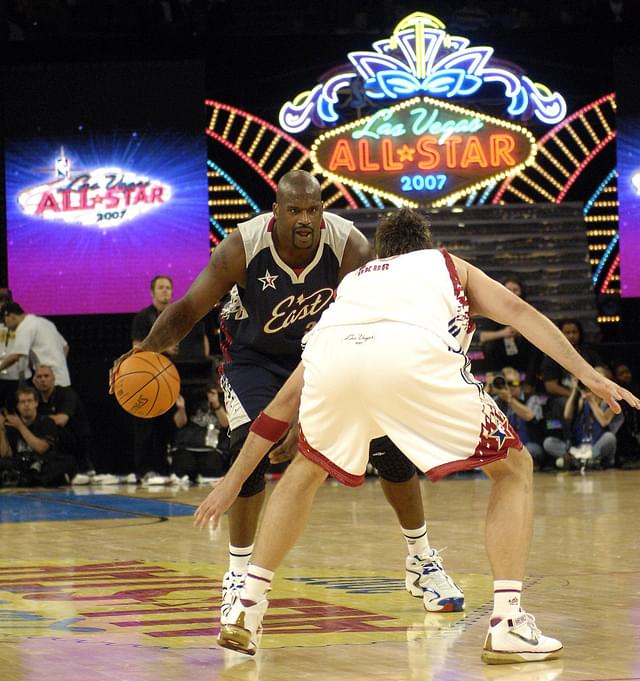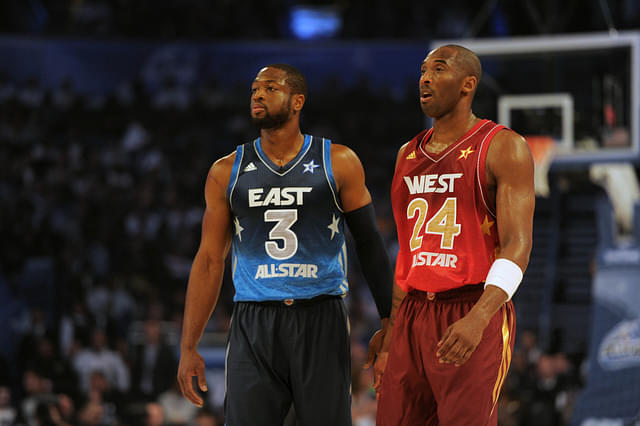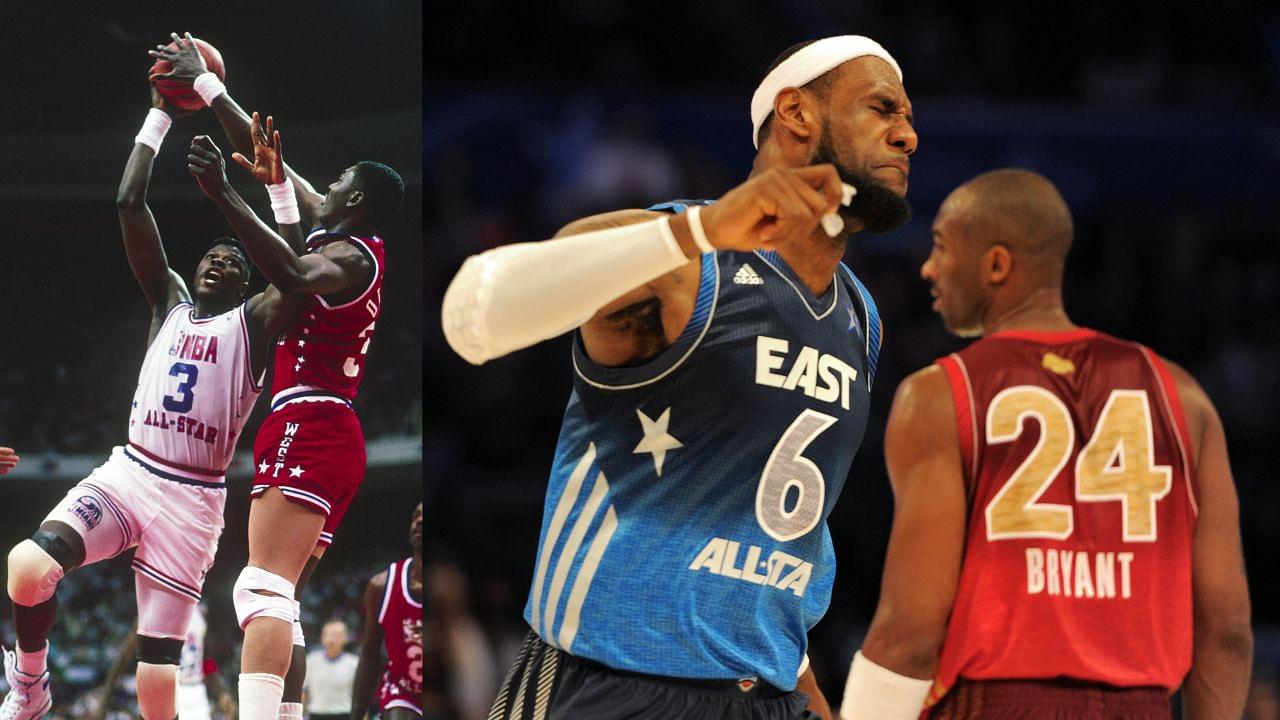While the annual NBA All-Star Game has lost its shine, its glorious 70+ years of history have brought some of the most exquisite jerseys ever. From being All-White to going multi-color, the lore of NBA jerseys is full of many top-notch basketball apparel. During the early parts of the league in the 1950s, it was all just numbers and the white color.
Advertisement
From there on, apart from numbers, names also started to figure, ultimately, we entered the colored jersey era. This led us to an era where players wore jerseys of their home franchise. As we return to the East vs West style again, let us trace the timeline of the All-Star jersey over the years.
1950s: Only White
When the All-Star game tradition began in 1951, the NBA opted for a simple design. A white-colored singlet, a graphic of six stars on either side of the jersey denoted a plain design. The athlete’s name was absent on the jersey with nothing but numbers imprinted on both ends. The knee-high socks and shorts way above the knees defined the lower part of the apparel. Even the name of the Conference was absent.
The players also wore belts akin to baseball. The Major League Baseball All-Star Game had been in existence for 18 years by the time the NBA All-Star Game came to surface. So, it is possible that the NBA All-Star game took serious footnotes from the MLB.
1963-1985: Playing with Colors
Before the mid-1960s, the NBA introduced colored jerseys with East and West written in big bold letters on the respective kits. The home team wore white while the Eastern Conference teams wore blue and the Western Conference teams wore red. In terms of sneakers, players wore the trending canvas high-top shoes. Meanwhile, the shorts remain of similar size as the 1950s when they were three inches at the inseams and way up from the knees.
In 1977, during an All-Star game in MECCA Arena, Milwaukee, the East wore the Milwaukee Bucks’ home jersey’s green color while the West wore their away jersey’s red color. This was a departure from the All-White and Red-Blue themes. In the 1970s, another huge change occurred when the jersey started having the names of the athletes.
1985-96: Trial and Error
Through the mid-1980s, the league returned to the white/red or white/blue theme. They aimed to help fans watching the broadcast identify which one was the West or East easily. Until the mid-1980s, the shorts size had been way up from the knees but Michael Jordan changed that. He introduced shorts that were nearer the knee area and covered the thighs. Then in the early 1990s, cursive writing was employed to write the names.

To experiment further, the league took inspiration from the Phoenix Suns’ jersey colors and introduced a purple jersey with the sun in the middle during the 1995 All-Star Game. This theme was repeated in 1996 along Vancouver Grizzlies’ color.
1997-2002: No All-Star Uniforms
One of the most striking changes occurred in 1997 when the league ditched the exclusive color schemes. They had players wear the jersey colors of their home franchise which brought together multi-faceted patterns.
They drew this inspiration from MLB which had their players try this out around the same period. Many fans are craving to bring back this style. However, it can create some confusion about which team has control of the ball.
2003-10: Return of All-Star uniforms
2003 saw the return of the white/red/blue-themed jerseys with the designation of East and West. However, there were minute changes. For the home team, the scheme had 80% white and the sides denoted the conference colors. Meanwhile, the away side had multi-colored jerseys with blue/red dominating 80%.

There were some experiments with fonts too and after around the mid-2000s, the 50% white, 50% red/blue theme also got into the picture. Apart from that, there were other design variations around the red/blue/white themes.
2010-2018: A Real Revolution
In 2010, the scenario changed completely. Players from both the Conferences started to wear their respective colors and it wasn’t just the home team wearing white anymore. East would go blue and West would go red. The jerseys were much more dynamic, having multiple designs in such cases.

This was a departure from the graphic of stars being the only prominent one. In 2014, the NBA introduced the concept of the half-sleeve jersey but the idea didn’t fly with the fans.
2018-2024: The New Norm
From the late 2010s, the jerseys departed from the East vs West format like the switch in the All-Star game’s core. Instead, names like Team Giannis and Team LeBron came into the picture. Unlike the older All-Star games, when the players could only wear white shoes with minimal design, the NBA allowed players to wear multi-colored shoes and even change their shoes mid-game.
The players had their names on the back and their number while the colors have varied over the years. Overall, from being plain white, the jerseys have evolved into a coalesce of many possible designs and colors. As per the latest leaks, the NBA is going back to the early 2010s design as the East vs. West format has returned. We will probably see the East in blue and the West in red again.





